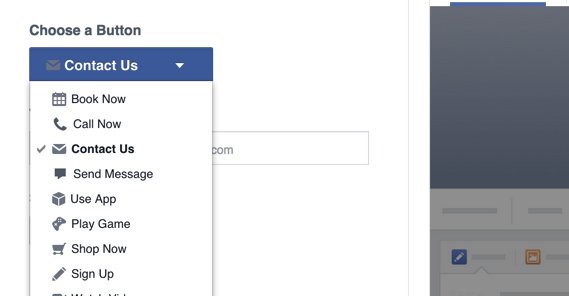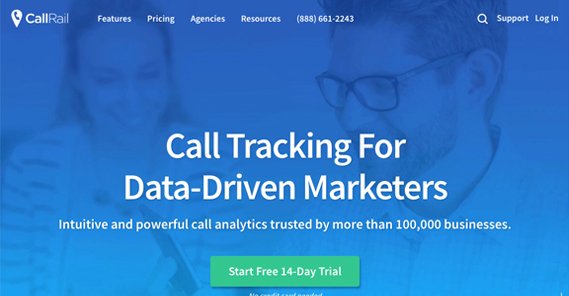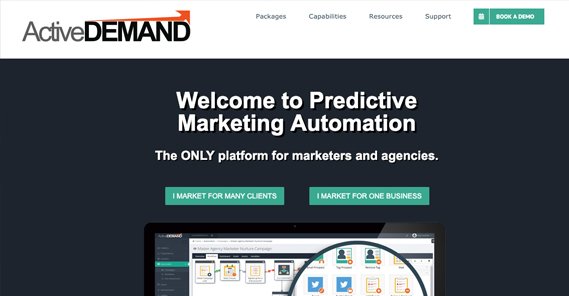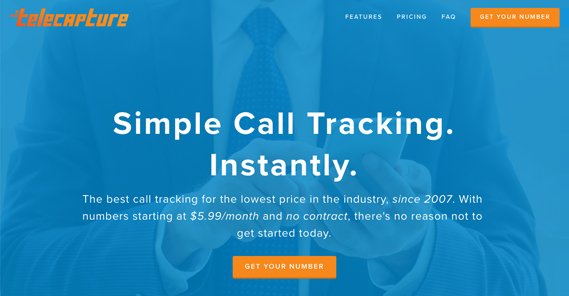How to Track Phone Calls as Conversions on Your Ad Campaigns
With most forms of advertising, you’re hoping to attract a customer “eventually”. That eventual time in the future might be in a few hours, a few days, or a few weeks, depending on the type of ad campaign you’re running. Brand awareness campaigns might not even care if a conversion is six months down the line.
Ads with a phone number or a call-based call to action are different. They’re aimed at attracting hot leads, the people willing to call you because they’re ready to make a purchase right now. You don’t want to miss these leads, but you also don’t want to fail to track them. Without appropriate data, how can you tell how effective your ads are?
I’ve split this post into two parts: one for Facebook ads and one for Google ads. Both have the ability to track phone calls, though the methods for doing each are pretty different. Let’s dig in!
Facebook Call Tracking
There are two different ways you can track phone calls using Facebook ads. One of them involves ads entirely on Facebook, while the other tracks off-site conversions on your own website.
The first method is to track phone calls as a conversion action through your Facebook page. Go to your Facebook page and look for the call to action button in the upper corner, beneath your cover photo.
You can change this call to action to be a number of different things. Any Page Admin, Editor, Moderator, or Advertiser can change this button. You can have that call to action be anything from “like this page” to “give us a call” in terms of options. Here’s how to set your call to action, according to Facebook’s help center.
In this case, what you want to do is plug in your business phone number as your call to action. This way, when a user clicks that call to action button, they will be presented with your phone number. In some cases, if they’re browsing on PC and have a VoIP application installed, clicking this button might bring up the option to initiate a call via their VoIP system. Likewise, if the user is browsing on a mobile device, it will bring up the option to initiate a phone call using their mobile device. Assuming, of course, the device has phone call capabilities; some people browse on tablets, after all.
What you will then need to do is create a promoted call to action. These are specialized ads that have the ad objective of “get the user to click the page default CTA button.” On Facebook, go to your main menu and click Promote, then click Promote Your CTA. You’ll have to fill out all of the normal details for an ad, and then promote it.
This is fine, except it only tracks when a user calls you. If a phone call is your conversion action, it’s good to go. If, however, you want to track conversions that occur via a phone call, you will need to record that data separately and import it later.
Tracking offline conversions is a surprisingly difficult and complex prospect. You can’t simply ask users if they called you because of your Facebook ad, right? You could set up individual phone numbers for each possible conversion method, but then you’re managing a bunch of different numbers and the associated expenses of having phone management.
Thankfully, Facebook has a fairly complete guide to tracking offline conversions in their help center, found here. You will need to use the Facebook business manager rather than their normal ad manager or Power Editor to manage offline conversions.
One thing that will probably be useful when you’re setting this up is this table. It’s a reference for how you should format the data for individual kinds of conversions offline. With phone numbers, you need to include the country code for your phone number, which many people forget. You should also, of course, include additional data about your offline conversions, like the name of the event, the value for the event, the ID for the order if applicable, the name of the converting user, and so on. This is all necessary to fully include all information in your analytics.
I said there were two methods for tracking calls on Facebook, and so far have only mentioned one. The other is to create awareness ads, under the reach option. You will need to have your phone number as one possible action a user can take on the landing page to their ad, and that phone number will need to be tracked using the Facebook pixel. You can view the pixel API data here, with “contact” being the relevant call. This, again, will only track if a user calls using a call button on your site, so it’s not a perfect option. There’s a third alternative as well, but I’ll cover it in a third section below.
Google Call Tracking
Google actually has four different ways to track conversions from phone calls.
You can track your calls from ads. With Google Ads, you can create a specific kind of ad called a call-only ad. These ads use a special call extension for your advertising, that encourages users to call and only displays in the first place when the user has the ability to make a call. You are also able to set a minimum length for the call, so you don’t track frivolous or spam calls as conversions accidentally.
You can track calls from a phone number you have embedded on your website. Much like the second option for Facebook above, you need to have Google’s tracking code embedded on your site. You’re already using Google Analytics, so all you need to do is add the appropriate structured data call to a specific call forwarding number displayed on your website. Again, you can track the length of a call to ensure that the worst, shortest calls are filtered out.
You can also track calls specifically on your mobile website. Google can even detect if the version of your website displaying to a user is the mobile or desktop version of a responsive design. This is only tracked as a click, not as a phone call; they can’t monitor the length of the call or filter the data.
Finally, much like Facebook, you can import your call conversions as tracked via another system internally. You can track as much data as you want about the call, from customer identity to conversion value to call length, but it’s all data you need to track and then import into Google’s systems.
In order to track calls or to import call tracking data, you need to be using a Google call forwarding number. Google forwarding numbers attempt to at least share the area code of the geographic location for your business, so they aren’t obviously a tracked or otherwise “strange” number when a user is considering calling.
The unfortunate side-effect of this is that Google can only provide call forwarding numbers in specific countries. You can see a complete chart of the countries where these numbers are available here.
Some, like India, only allow toll-free numbers and not local numbers. Others, like Brazil, do local numbers but not toll-free numbers. Most do both. A few, like Japan, will show the caller as Google in Caller ID, due to local transparency laws.
There are a lot of different considerations when tracking phone calls through Google analytics and Google ads. I can’t give you specific tips because it will come down to your specific setup and how you want to be tracking call conversions. I recommend mapping out exactly where your calls are coming from and how you want them tracked, and then dig into the help center to find specific information about those sources of data.
The general process will involve setting up a call-based conversion action in your Google Ads system. You will then want to install a tracking tag on your number on your website and ads, if applicable, and make sure the phone number you’re tracking is a Google forwarding number. Google also provides a troubleshooting document here for when you’re setting up call tracking but things aren’t working quite right.
Third Party Call Tracking
The alternative to both of these, and a simpler one, is to use a third party call tracking service. A third party call tracker will do basically the same thing as Google’s call tracking, using a forwarding number to track information about phone calls. Many of them also offer a CRM or related application your call center or sales team will use. When a call comes in, the application activates. The person who picks up the call will then log information about the caller – such as name, purpose of call, and if a conversion happens – along with automatically logged data like date and time.
All of this information will then be compiled into one format, usually a specific call-based set of analytics. The third party call tracker may or may not allow you to integrate your data with Google and Facebook analytics, or a third party analytics system. They might allow exports in a format for you to import, as well. It really depends on the system.
With that in mind, here are a few possible third party call tracking companies you might consider. Full disclosure, I haven’t used any of these myself, so I can’t vouch for their quality. Do your own research, make sure they offer the features you want at a price you can afford, and contact their sales teams if you want to know more.
CallRail – A call tracking company that offers call attribution, business-level call management, integration into several large systems like Google Ads, Hubspot, and Salesforce, and call routing with geographic-level targeting. They have a two-week free trial and their starter plan begins at $30 per month. That includes 10 local numbers, 500 minutes of phone time, and 100 text messages.
Call Tracking Metrics – Despite the generic name, this is a specific company. They offer call management, analytics, text messaging, reporting, and agency-level tools. Their business plan starts at $20 per month plus additional fees for usage based on the type of number, whether or not you’re getting transcriptions of your calls, and the geographic location of your calls.
Active Demand – This app has predictive automation and has versions for both agencies and for individual businesses. Basic call tracking can be free at low levels, so small businesses might consider looking into this app first and foremost. For larger business plans, they also include email marketing and tracking, as well as automation for varying levels of need.
CallCap – This platform has call tracking and call monitoring, as well as some call recovery features for cases where a call is dropped unexpectedly. They also have some tracking for outbound marketing, texting, and integrations into several ads systems, including Doubleclick. Pricing is par for the course and starts at $30 per month, with additional fees if you go over the basic usage limits.
Telecapture – One of the older call tracking companies, they offer real time reports, local numbers and toll-free numbers throughout the United States. They’re fully open for exporting your data, and they can allow you to customize called ID and other features. Call recording is available for review, and they have a spam call filter to avoid noise in your analytics. They’re also quite cheap in comparison to some others, starting at $6 per month.
Hopefully with at least one of these options, you’ll be able to track the call information you want in your analytics. It can be a little complex to set up, that’s for sure, but the agents working for any individual company, even Facebook or Google, should be able to give you a hand.
 ContentPowered.com
ContentPowered.com










